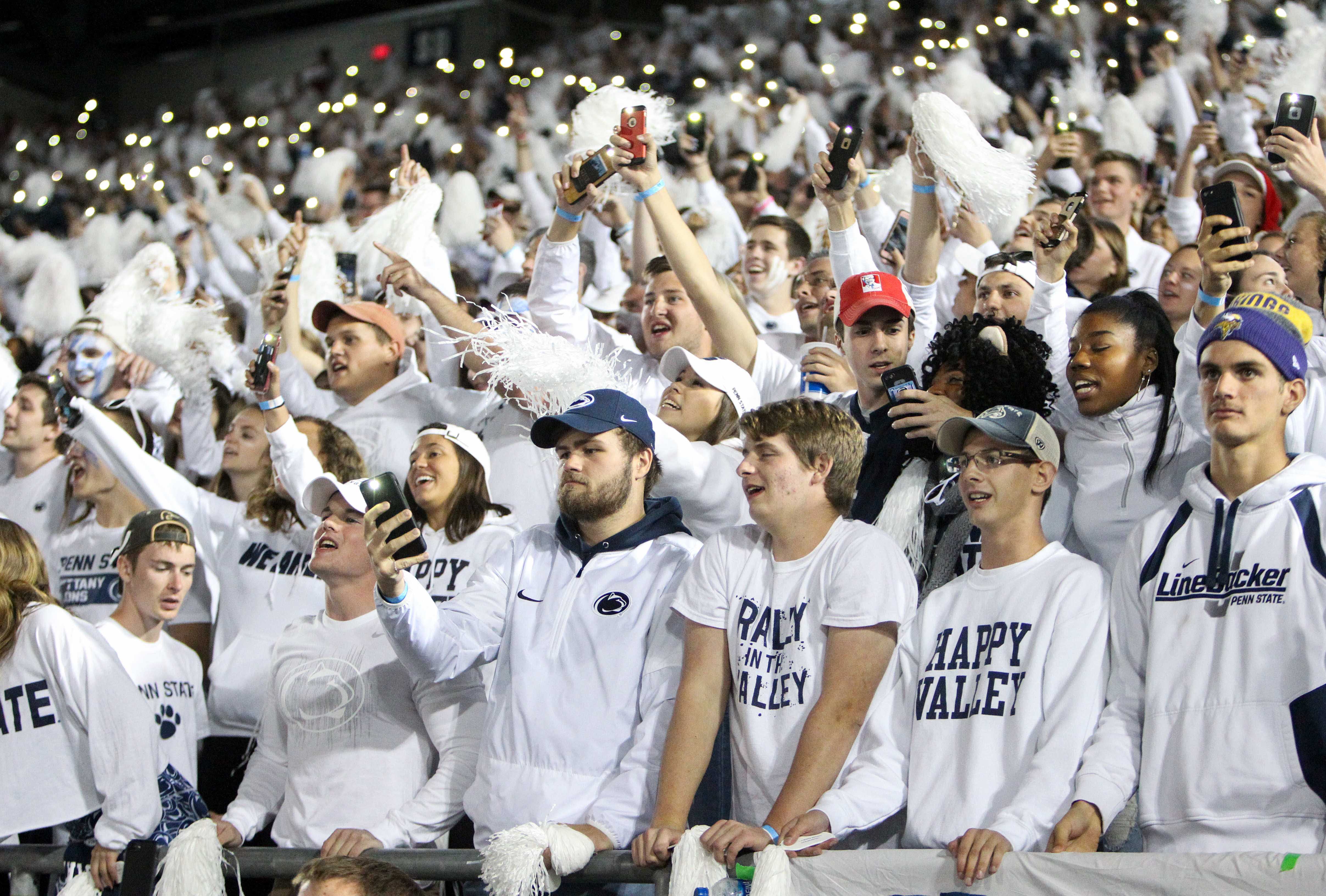Ad Disclosure

The legend and the legacy: Remembering Wally Triplett and celebrating the ideal of Penn State’s “We Are” cheer
By Luke Glusco
Published:
I went decades as a Penn State fan belting out one part or the other of the “We Are … Penn State” stadium chant with no thought that it might have meaning beyond face value.
And then I saw an ESPN short film about the We Are sculpture that resides on the corner of Curtin Road and University Drive, a couple of McSorley-to-Hamler deep balls from Beaver Stadium.
.@Tribeca Festival featured film chronicling development of Penn State's 'We Are' sculpture: https://t.co/m1suZW1Osz pic.twitter.com/foM7Ij7p3Y
— Penn State (@penn_state) April 18, 2016
I imagine most Penn State fans have seen the video, but if you haven’t, you really should take the time to click the link and watch. For some Nittany Lions diehards, the beginning of the 11-minute clip might over-dramatize the university’s need for healing and redemption in the wake of the Sandusky scandal. I urge you to wade through that, because the crux of the story — the part about an African American man named Wally Triplett — should be required knowledge for all Penn State fans.
Wally Triplett died this week at the age of 92. By all accounts, he lived a quiet, dignified post-football life. He is the Jackie Robinson of football, yet his story seems to get less fanfare, probably because football had not eclipsed baseball as America’s pastime in the 1940s.
The Penn State Football family is extremely saddened to hear about the passing of Nittany Lion great & trailblazer, Wally Triplett. Wally will forever be admired for the history he made at Penn State & beyond.
Forevermore, We Are…
🔗: https://t.co/mu6PXkpbeS pic.twitter.com/jKS5c6rJVV
— Penn State Football (@PennStateFball) November 8, 2018
I watched the video about Mr. Triplett and his college teammates, and I got choked up with a mix Penn State pride and tremendous frustration. The juxtaposition hit me like Shaka Toney coming off the edge against an unsuspecting quarterback — how far a select few young men had already come in the 1940s against the divide that haunts parts of our country still.
Triplett shook off the hate and stupidity of the broader college football world and found a home at Penn State in 1946. In 1948, he became the first African American to play in the Cotton Bowl and in 1949 became the first to play in the NFL. He dealt with all the indignities one would expect, and — based on his first-person reflections — came out of it more proud than bitter.
Perhaps some credit for that goes to Steve Suhey, the team captain who led the squad to the unanimous decision that all of Penn State’s players or none of them would play in any game. The program canceled a game at Miami in 1946 and went en masse the next season to the Cotton Bowl — in which Triplett scored the tying TD against SMU.
Now, Suhey may not have uttered the exact phrase “We are Penn State,” and the Triplett-Suhey story might not be the actual origin of the cheer. There’s a snide saying among and about journalists: never let the facts get in the way of a good story. We can skip the snideness on this one. Even if done retrospectively, the story magnifies the meaning of the chant. It’s a rather perfect fit.
We would do well, as Penn Staters, to carry this ideal forward and expand it. Too many in our country are working extremely hard to divide people into us vs. them groups based on race, religion, gender, sexual preference and political ideology. There is great strength and power in “we.”
We find common ground in our shared football fandom and Joe Paterno’s quest for Success with Honor. Paterno, like Triplett, was born in 1926 (as were both my parents, which is why I carry a certain fondness for this generation). Paterno arrived at Penn State as an assistant in 1950, just after Triplett had gone on to the NFL. Four generations of the Suhey family played or coached for the Lions. So maybe, just maybe, the seed for Paterno’s “Grand Experiment” predated his arrival.
The “WE ARE” chant may have actually originated in the 1970s, but it’s not crazy to believe it has roots in the 1940s. And it’s not crazy to think it will still carry significance in 2040.
It’s the nature of the sports fan to revere tradition and folklore, and to believe that their significance carries forward to the modern day. In this case, I hope that WE ARE unified in that belief.
WE ARE … PENN STATE.
Luke Glusco is a Penn State graduate and veteran journalist. He covers Penn State and occasionally writes about other Big Ten programs and topics. He also serves as the primary copy editor for Saturday Tradition.